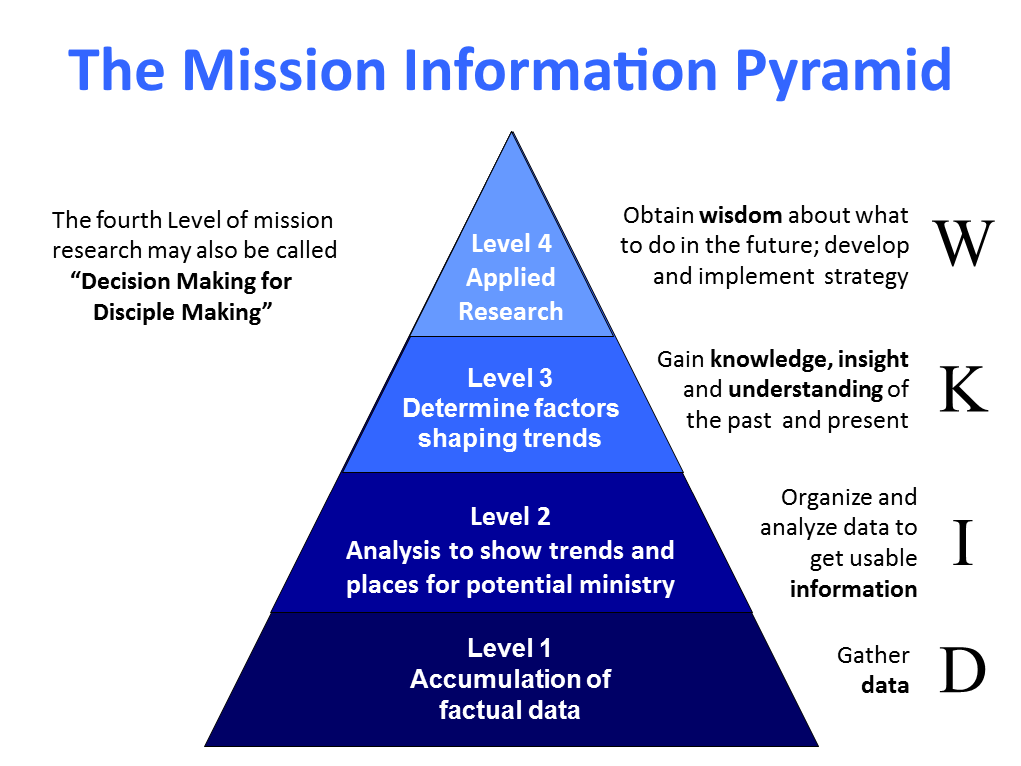Standing on the Shoulders of Giants
“If I have seen further, it is by standing on the shoulders of giants” – Isaac Newton
Why is research important to Christian missions? Why should we make an effort to count the believers and number the churches? What does a mission information worker do anyway?
Over the years these are some of the questions that have come my way about mission research. Based on my limited experience and understanding, I’ve tried to explain how research is helpful to Christian missions. But in recent years I’ve discovered that One Challenge has numerous “research giants” who have greatly helped me understand and articulate the importance of research to Christian mission.
In this article I will focus on the contribution of two of these research giants, whose complementary insights, though made a generation apart, have greatly shaped my understanding of missionary research and what a mission information worker does. Like Isaac Newton, I can see further by standing on the shoulders of these giants! By reading this article you will learn about four categories of mission research, the Mission Information Pyramid and how the Mission Information Pyramid informs the practice and application mission research.
Four Categories of Mission Research
Back in 1988, Paul Yaggy, one of the early champions of mission research in our organization, described four categories of mission related research. The following descriptions come from his Position Paper on OC Research.
-
The first is those who are accumulating factual data only. This includes demographic information regarding both the context and the institutional church. Such information is published or maintained for access and use by others as they desire.
The second category is made up of those who do such analysis to show trends and to define potential places of ministry which are in need of pioneering effort.
The third category consists of those who not only do trend analysis, but seek to discover to a limited degree some of the factors which cause these trends. These organizations publish papers along with their statistical data and analysis to assist whoever is interested in such information.
A fourth category in which OC finds itself is organizations which do all of the above but carry the analysis of the factors to greater depth with the primary purpose of understanding both the institutional church and its context with regard to past and present ministry effectiveness as well as its potential for meeting identified needs in the future. The primary output of such research, as far as OC is concerned, is a basis for decision making for its own ministries in serving the church and for carrying out the other three categories of OC’s basic strategy of motivation, training, and mobilization.
For some time this writer has wrestled with a succinct way to describe Yaggy’s fourth level. Technically speaking, what information workers do can be classified “applied research.” -- but that does not seem to excite much passion nor effectively communicate with church people what we do. I’m more enthusiastic about “decision making for disciple making” as a mission information worker’s goal is to provide the body of Christ with information to assist decision making for effective disciple making.
To summarize, we might also say that the task of mission information workers at levels one and two is to determine the facts. At level three, mission information workers seek to determine factors shaping the trends. And the focus of level four can be called decision making for disciple making.
The Mission Information Pyramid
Jumping ahead thirty years or so, our current director of research, set Yaggy’s four categories of mission research in the context of an information model known as the “DIKW Pyramid” or the “Knowledge Hierarchy”. This model further elaborates what mission information workers seek to discover at each level of research. The acrostic DIKW is short for Data, Information, Knowledge and Wisdom. These four words nicely describe what the mission information worker seeks at each level. For our purposes we will call this the Mission Information Pyramid.

Putting the Mission Information Pyramid to Work
Let’s use the mission information pyramid to explain the importance of mission research and what a mission information worker does.
At level 1, the mission information workers gather factual data. This may involve collecting new data or finding usable data others have gathered. Because we don’t want to re-invent the wheel, library research will able be done to discover what others have already done in the area under study and to obtain correlative data. To gather new data, online surveys, questionnaires, censuses, participant observation, focus groups, interviews, and ethnographies are some for the various tools information workers may use. At this level, missionary research is not glamorous; it is just plain hard work.
At level 2, the data is organized and analyzed to get usable information. At the level 2, the mission information workers seeks to answer who, what when and where type questions. As Yaggy said, analysis will show trends and places for potential ministry. The mission information worker’s analysis may show annual or ten year growth rates for conversions or church growth, the percentage of a population that is Christian, or the ratio of churches to population. Charts, graphs, data tables, infographics or maps along with written reports or oral presentations may be used to convey findings. Aha! Here we have some information that may be useful.
At level 3, mission information workers seek knowledge, insight and understanding of the past and present. Yaggy also pointed out that here we want to discover the factors shaping the trends. I like to say that that at this level we seek answers to the how and why questions. At this level, interviews with insiders are essential. Case studies may be done to show models of effective disciple making, or the case studies may show what is hindering the process of making disciples. Focus groups and participant observation are also useful means to gain insight. The mission information workers will also consider contextual factors that are helping or hindering the disciple making process as factors outside of the institutional church often affect trends. These factors be rooted in historic, religious, or geographic realities or imply social, technological, economic, ethnic, political or environmental factors, to name a just a few. This is where an outsider may have an advantage, as a broader or fresh perspective may enable an outsider to see things that an insider takes for granted. Asking good questions and listening, along with critical reflection, will yield important insights. This is where mission research becomes exciting!
At level 4, the mission information worker seeks wisdom. Again this is a shift of focus. Whereas in the previous levels, we focused on the past and present, now we consider what to do in the future. Here we make applications. Mission research is applied research after all. Here we need to make wise decisions. As we said earlier, this fourth level can be described as “decision making for disciple making”. This is where “the rubber hits the road!”
Informed Decision Making
There are three broad areas where mission research informs our decision making.
First of all, we will be better informed about how we should pray. This was, after all, Jesus first application of his mission research (Luke 10:2).
Second, because we identified needs in the church and in the target communities, we will seek to send the right people to the right places doing the right things to meet those needs. Let’s draw upon the “five-fold ministry” found in Ephesians 4 as an example. We (hopefully) will make a case for sending evangelists to the areas that are “ripe for harvest” where God is at work or sending apostles (aka missionaries) to places and peoples that still have need of pioneer works where “Christ has not been named” (Romans 15:20). We will send pastors and teachers where the churches need strengthened. And perhaps prophets (or to draw upon an old term “exhorters”) will go and stir up the church to greater love and good deeds where sin, falsehood or love of this world has weakened the witness of the church.
Third, since our case studies likely identified out more and less fruitful approaches to ministry, we will need to evaluate our own ministries and sharpen our ministry practices, abandoning less fruitful or no longer relevant ministries and making fruitful ones evermore so. We need God’s wisdom for all of these (James 1:5). If the information itself has not driven you to your knees in prayer, the challenge of implementing change certainly will!
In conclusion, I am indebted to Paul Yaggy and the current director of OC Research. By standing on the shoulders of these “research giants”, I’ve been able to see further. I hope that their insights, and maybe a few of my own, have helped you better understand the importance of research to Christian mission and what a mission information worker does.
- Log in to post comments
